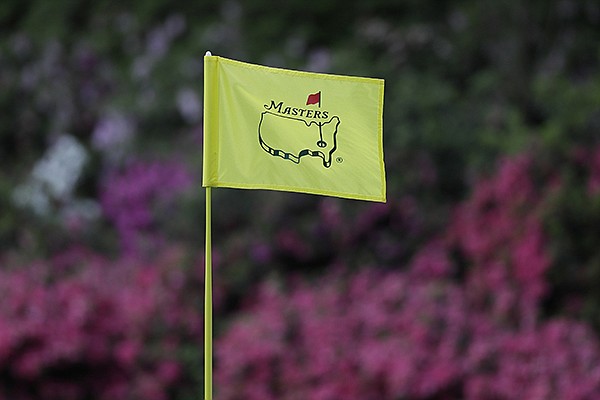This is the weekend that even casual golf fans settle in for some long stretches of TV.
The Masters – and the beauty of Augusta National Golf Club – is quite the draw.
What a rank amateur would score from the championship tees at Augusta National was the subject Friday during my time on the Morning Rush radio show with Tommy Craft and Tye Richardson.
I’ve played that exact setup, although not at today's more brutally long setup. Augusta National was around 6,800 yards from the tournament tees when I played as part of the media lottery after the 1977 tournament, when Ray Floyd beat runner-up Ben Crenshaw by eight strokes.
After a thumbs up on the range warming up when Jack Stephens brought the club pro to see me hit a few shots, I played the back tees on Monday. The pins were in the same spots Floyd played, although the greens had not been mowed since Sunday morning. They were not slow, but they were not tournament speed.
At a 5 handicap, I had a shot at breaking 80 until I hit it in the water three times on the back nine. I shot 39 on the front and then gambles at both the 13th and 15th did me in. My caddie said my chances at reaching the par-5 holes in two were unreasonable, but nonetheless appropriate.
“Boss, you are never going to be here again,” he said, handing me my fairway wood.
I could have played for routine pars and maybe gotten in at 78 or 79. Instead, I went for the par-5 holes in two with the idea that I might make an eagle. Once I failed at the 13th, the gamble at the 15th was never in question.
I’m reminded that Arkansas men’s golf coach Brad McMakin made a rare double eagle at the 15th when playing with Frank Broyles, a member at Augusta National. You go for the green there for the single reason that something unbelievable could happen.
Augusta National is about 500 yards longer now, stretched because of the modern equipment that allows almost all PGA Tour pros to loft 300-yard drives and several to hammer them 330 or more.
It’s a wide open layout. Yes, you can find the trees, but there is no rough like most Tour stops or the other three majors. The course setup is for the older Augusta National members to enjoy on a daily basis.
What my father and I discovered is that you can break 90 with relative ease, but anything in the 70s is tough. You can make lots of bogeys, but pars and birdies are tough scores.
It’s a fun course. It’s not brutal. Yes, the greens can get firm and fast, but there are ways to “safe” it around the course and avoid bad scores.
Well, you can do that if just the idea that you are walking on hallowed grounds doesn’t make you quiver. It took me about five holes before I could draw the club back with any rhythm. I was scared to death.
The thing that has changed at Augusta National of late is the amount of water on the course. Its lushness is obvious on TV.
We’ve been in a wet cycle in Arkansas for about 10 years. I know that because of my love of fly fishing. I’m a wade fisherman, but the lakes have been full the last decade and generation below the dams has been much too frequent for a fly fisherman to wade in the spring.
It’s no different at Augusta. The course has been wet and that allows the world’s best players to fire at pins. That was the case last November when Dustin Johnson set the tournament record at 20-under par.
That’s not the case this year. It’s firm and fast at Augusta National. Short irons are taking big bounces. It’s tough to keep shots on the right shelves. The greens are rolling quicker and there is more break as putts die.
It should be a year when shot creativity and supreme touch around the ground is rewarded – like in the old days when greens were sometimes almost bare, too slick to control approach shots and with an unbelievable putting touch required.
Back to the original question: What would an amateur shoot? It’s really no way to know. Augusta National leadership has never allowed the USGA to rate the course.
The story went that Clifford Roberts, the club president, said members already knew what they would shoot there. He had his own handicap system derived from rounds played there by members. That’s all he needed.
Rating experts have come up with their own attempt at a USGA number while walking the course. It’s less than ideal, but usually those numbers come out to be somewhere between 78 and 79. That would put it among the world’s toughest.
The reasoning is that the severity of the greens, the number of water hazards close to pins and the up-and-down nature of the fairways just would add too many tough shots for the normal player.
Of course, nerves are going to play a role in elevating scores. Could you keep from throwing up facing that short iron shot at the par three 12th? My stomach was churning when I hit my No. 7 iron, a flare to the right resulting in a big splash.
My caddie smiled as he flipped me another ball and said, “Boss, relax your right hand a little before you hit this next one. You white knuckled that water ball. This shot does it to the best of them.”
Yes, I hit three balls in the water on the way to that 81. It’s just what happens at Augusta National. I’ll be reliving all of those shots as I kick back in my recliner this weekend. It’s a great time to watch golf.

